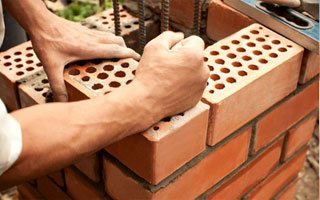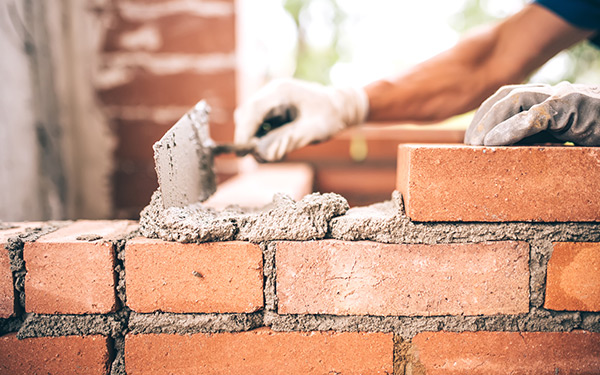Set Up a Chimney Sweep Today for a Clean and Safe Fire Place
Set Up a Chimney Sweep Today for a Clean and Safe Fire Place
Blog Article
Opening the Tricks of Lasting Stonework Building And Construction Practices for Eco-Friendly Structures
Among the myriad strategies to environmentally friendly structure, sustainable stonework building stands out as a reliable and resilient method that holds a wide range of untapped capacity. From the selection of products to innovative building techniques, the secrets to achieving sustainability within stonework building are diverse and interesting.
Advantages of Lasting Stonework Building And Construction
Embracing lasting stonework construction practices not only minimizes ecological influence yet also uses long-lasting financial advantages to builders and communities. By using materials like recycled bricks, obstructs, and stones, contractors can dramatically lower the carbon impact of their jobs while promoting resource performance. Additionally, sustainable stonework construction strategies, such as correct insulation and thermal mass homes, can enhance power performance within structures, bring about decreased operational prices with time.
Additionally, the longevity and durability of masonry frameworks add to lasting economic benefits. Structures constructed making use of sustainable masonry practices usually need less upkeep and repair, converting to cost savings for builders and residential property owners. The durability of masonry materials also guarantees that frameworks stay steady and secure, minimizing the need for constant remodellings or substitutes.
Eco-Friendly Masonry Products
Utilizing eco-friendly masonry materials is a crucial action towards improving the sustainability of building techniques and reducing ecological effect while taking full advantage of long-lasting economic advantages. Sustainable stonework materials are sourced, produced, and made use of in a fashion that decreases overall ecological effect. Sustainable concrete blocks incorporate recycled accumulations and might feature enhanced insulation properties, contributing to energy performance in buildings.
Furthermore, all-natural materials like adobe, rammed earth, and straw bales give superb thermal mass residential properties, reducing the demand for heating and cooling down power. These materials are usually locally readily available, promoting regional economic situations and minimizing transportation-related carbon emissions. By picking environmentally friendly stonework materials, building and construction tasks can substantially reduce their ecological impact and add to the development of healthier, a lot more lasting developed atmospheres.
Energy-Efficient Stonework Techniques
Energy effectiveness plays a critical role in enhancing the sustainability of masonry building and construction practices. One essential energy-efficient stonework method is the usage of thermal mass, which involves integrating dense products like concrete or block right into the structure's framework to soak up and store heat.

Technologies in Sustainable Masonry
Recent advancements in lasting stonework practices have actually produced ingenious methods that are reshaping the construction market. One such innovation is the advancement of self-healing concrete, which utilizes microorganisms embedded within the concrete to recover cracks autonomously. This innovation not just lowers maintenance expenses but likewise boosts the durability of masonry frameworks, contributing to their sustainability.
An additional notable advancement is the usage of recycled aggregates in masonry building and construction - masonry contractor. By incorporating products such as smashed ceramic waste or recycled glass into concrete mixes, builders can decrease the ecological influence of construction projects while preserving architectural honesty. This practice not just draws away waste from landfills however additionally preserves natural resources, making it a crucial development in sustainable stonework construction
In addition, the assimilation of electronic design tools, such as Building Details Modeling (BIM), is transforming the means stonework frameworks are concrete wall footing design planned and constructed. BIM enables more specific estimations, reduced material wastefulness, and see it here improved energy efficiency, eventually causing even more sustainable building methods. These advancements collectively represent an appealing future for lasting stonework building and construction in the age of eco-friendly buildings.
Future Trends in Masonry Sustainability
With the ingenious strides made in sustainable stonework practices, the future fads in stonework sustainability are positioned to more reinvent the building and construction sector. Among the essential fads forming the future of stonework sustainability is the increased assimilation of technology. Developments such as Structure Details Modeling (BIM) and virtual truth simulations are being made use of to enhance stonework building and construction processes, causing lowered product waste and enhanced power performance in buildings.
Additionally, the advancement of unique lasting materials is set to play a substantial duty in improving the eco-friendliness of masonry building and construction. masonry contractor. Innovations like self-healing concrete, recycled aggregates, and bio-based binders are gaining traction for their capacity to reduce environmental effect while maintaining structural stability

Final Thought
Finally, sustainable masonry building methods supply numerous benefits for green buildings. By using green materials and energy-efficient methods, masonry can add to a much more lasting constructed setting. Innovations in sustainable stonework are constantly being created to better boost the environmental performance of buildings. Looking towards the future, the pattern of masonry sustainability is expected to expand, resulting in more eco-friendly and energy-efficient building and construction techniques in the years ahead.
Report this page